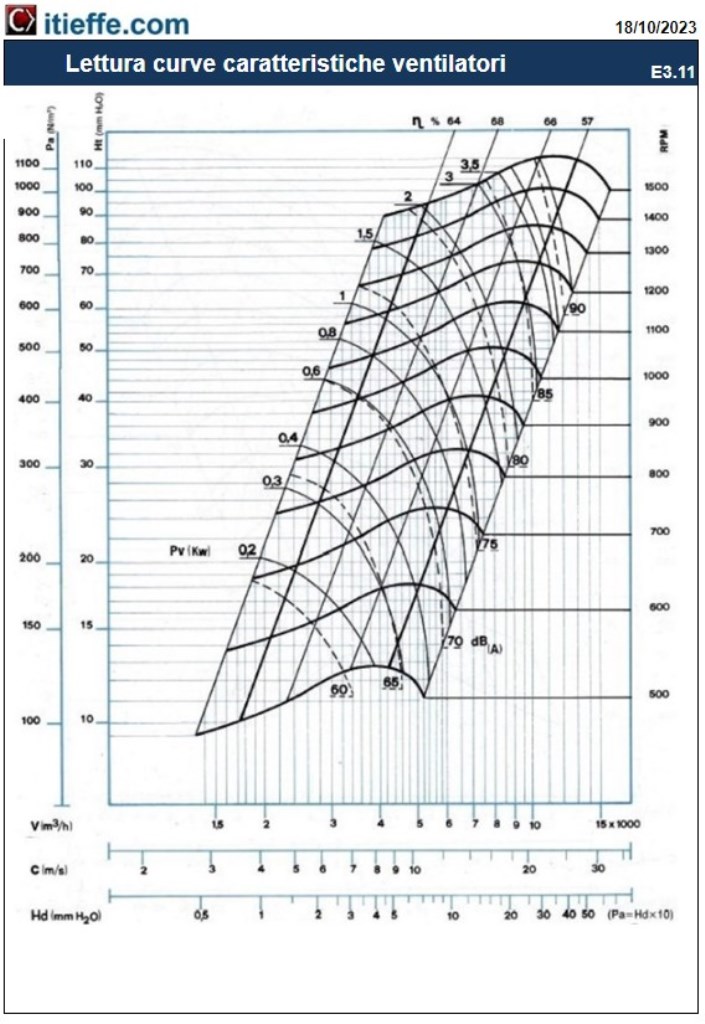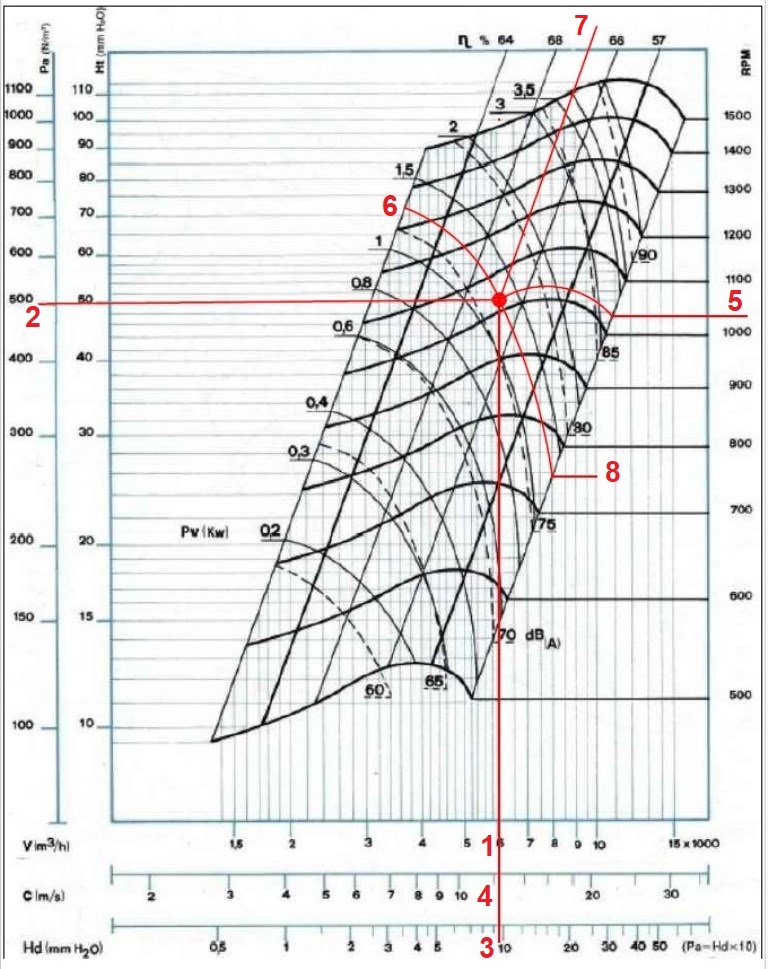Reading fan characteristic curves

Detailed overview of the characteristic curves of fans used in ventilation and air conditioning systems.
Welcome to this guide designed and created by Itieffe. It was created to provide a detailed overview of the characteristic curves of fans used in ventilation and air conditioning systems.
Understanding these curves is essential to optimizing ventilation system performance and ensuring a safe, comfortable and energy efficient indoor environment.
Contents of the guide:
- Introduction to fan characteristic curves: Let's start with an overview of the key concepts and importance of fan characteristic curves in the context of HVAC systems.
- Curve Components: We will look at the different components of a fan characteristic curve, including airflow, static and dynamic pressure, efficiency and other relevant parameters.
- Types of curves: The guide is applicable to the main types of characteristic curves, such as fixed blade fan curves and adjustable fan curves.
- Interpretation of curves: we will learn how to interpret characteristic curves to determine the fan's operating point and evaluate its performance in specific conditions.
- Calculation of parameters: we describe how to calculate the key parameters, such as the required power, based on the characteristic curves also with the help of other programs present on the Itieffe website.
- Examples and exercises: we will see practical examples and exercises to help consolidate skills in reading the characteristic curves of fans.
Using the Guide:
This guide has been designed to be a complete reference in reading the characteristic curves of air fans. It can be used by engineers, HVAC technicians, designers and anyone involved in ventilation system management and optimization.
Important Note:
Reading fan characteristic curves requires an in-depth understanding of specific applications and thermal engineering principles. This guide is a learning and support tool, but does not replace the expertise and experience of an industry professional. It is essential to apply the knowledge you have gained with caution and in accordance with local laws and regulations.
We hope this guide provides you with a solid foundation of knowledge on reading air fan characteristic curves and helps you make informed decisions to improve the performance of your ventilation and air conditioning systems.
Reading fan characteristic curves
Guide created to provide a detailed overview of the characteristic curves of fans used in ventilation and air conditioning systems.
Program created to allow anyone to trace the type of fan to use for a specific circuit.
Starting from the air flow rate that the fan must treat, we go back to all the other values that characterize it and consequently allow the user to determine the size of the fan itself.
INSTRUCTIONS
How to proceed for choosing the fan
Let's consider the air flow V = 6.000 m3/h and the total pressure Ht = 500 Pa (50 mm H2O), necessary in our system
NOTE: the fan must work between the right and left wings of the efficiency η marked in bold and identified in the values (in this case) 57 and 64%.

| LEGEND | ||
| V | Air volume | m3/h |
| Ht | Total Pressure | Pa |
| Hs | Dynamic pressure | Pa |
| Hd | Static pressure (Ht-Hd) | Pa |
| n | Number of fan revolutions | RPM |
| η | Performance | % |
| Pv | Power Consumption | kW |
| dB (A) | Sound pressure level | Decibel |
| c | Air outlet speed | m / s |
1 – let's take the value 6.000 m3/h on the intended abscissa and draw a parallel to the ordinate.
2 – we insert from the value Ht = 500 Pa a parallel to the abscissa.
From the intersection, we follow the existing curves:
3 – let's read the dynamic pressure value Hd = 97 Pa (9,7 mmH2O)
4 – the air speed C = 12,2 m/s
5 – of the revolutions per minute that the fan must make n = 1020 revolutions/minute.
6 – the power absorbed by the fan Pv = 1,25 kW (entire line)
7 – the efficiency of the fan motor η = 67%
8 – and finally the sound pressure level dB(A) = 75 decibels (dotted line).
Summarizing the values
- V = 6.000 m3/h
- Ht = 500 Pa (50 mm H2O)
- Hd = 97 Pa (9,7 mmH2O)
- Hs the static pressure will be equal to 500-97 = 403 Pa (40,3 mmH2O)
- C = 12,2 m/s
- n = 1020 rpm
- Pv = 1,25 kW.
- η = 67%
- dB(A) = 75 decibels.
Note that normally it is enough to have two certain values available for it to be possible to trace the others.
Having two measurable values and the exact fan curves available, it is possible to trace all the other values - just find the intersection point where all the values converge and from there trace via the lines and curves to what you are looking for.
Easy right?
good job
